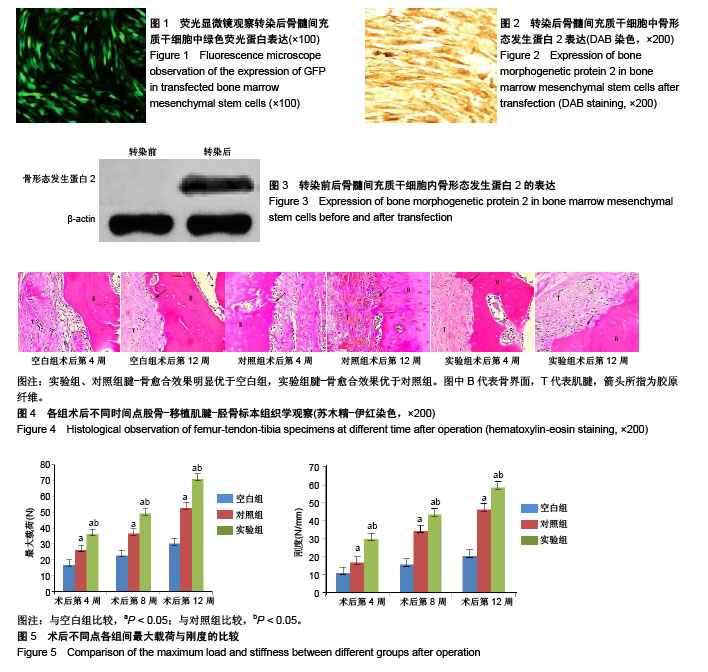| [1] 颜林飞.关节镜下膝关节前交叉韧带重建远期疗效及影响因素研究[J].数理医药学杂志,2018,31(3):366-367.[2] 宋洋,杜庆钧,欧阳毅,等.关节镜下前内侧束紧缩、后外侧束保残重建术治疗前交叉韧带损伤的临床疗效[J].广西医学, 2018,40(1):44-47,64.[3] 陆定贵.关节镜下后交叉韧带损伤重建技术研究进展[J].右江医学, 2018, 46(1):103-107.[4] Murray MM, Fleming BC.Use of a bioactive scaffold to stimulate anterior cruciate ligament healing also minimizes posttraumatic osteoarthritis after surgery.Am J Sports Med. 2013;41(8):1762-1770. [5] 柴双,吕松岑.前交叉韧带重建术后促进腱-骨愈合因素的研究进展[J].医学综述,2017,23(4):718-723.[6] Hu J, Yao B, Yang X, et al.The immunosuppressive effect of Siglecs on tendon-bone healing after ACL reconstruction.Med Hypotheses. 2015; 84(1):38-39. [7] 张明宇,张宪,杨镇,等.PRP明胶海绵复合物在前交叉韧带重建术后腱骨愈合的作用[J].中国矫形外科杂志,2017,25(8):737-742.[8] 崔巍,吕伟,时剑辉,等.关节镜下自体骨膜包裹6股腘绳肌腱移植前交叉韧带重建的中期疗效评价[J].中国现代药物应用, 2016,10(17):114-116.[9] 余刚,徐斌,涂俊,等.外周血间充质干细胞复合富血小板血浆对腱骨界面愈合的影响[J].安徽医科大学学报,2017,52(5):770-773.[10] 逯代锋,杨传东,董锋,等.酸性成纤维细胞生长因子复合胶原蛋白对兔前交叉韧带重建后腱-骨愈合的影响[J].临床骨科杂志, 2017,20(6):752-756.[11] 石斌,刘玉杰,王志刚,等.体外冲击波对兔ACL重建腱骨愈合影响的组织学观察[J].军医进修学院学报,2010,31(10):951-953.[12] 陈平.人脂肪源干细胞在促进兔前交叉韧带重建术后腱骨界面愈合的实验研究[D].广州:南方医科大学,2017.[13] Dang PN, Dwivedi N, Phillips LM, et al. Controlled Dual Growth Factor Delivery From Microparticles Incorporated Within Human Bone Marrow-Derived Mesenchymal Stem Cell Aggregates for Enhanced Bone Tissue Engineering via Endochondral Ossification.Stem Cells Transl Med. 2016;5(2):206-217. [14] Solorio LD, Phillips LM, McMillan A, et al. Spatially organized differentiation of mesenchymal stem cells within biphasic microparticle-incorporated high cell density osteochondral tissues. Adv Healthc Mater. 2015;4(15):2306-2313. [15] Tian F, Ji XL, Xiao WA, et al. CXCL13 promotes the effect of bone marrow mesenchymal stem cells (MSCs) on tendon-bone healing in rats and in C3HIOT1/2 cells.Int J Mol Sci. 2015;16(2):3178-3187. [16] Kanazawa T, Soejima T, Noguchi K, et al. Tendon-to-bone healing using autologous bone marrow-derived mesenchymal stem cells in ACL reconstruction without a tibial bone tunnel-A histological study. Muscles Ligaments Tendons J. 2014;4(2):201-206. [17] 刘杨,孙大磊,王毅,等.BMSCs和FG作为种子细胞和支架材料修复大鼠牙槽骨缺损的效果[J].口腔医学,2017,37(4):307-310.[18] 周丽斌,徐冰心,丁瑞英,等.应用纤维蛋白胶复合细胞膜片构建人工软骨[J].中山大学学报(医学科学版),2017,38(1):122-127.[19] 周维锋,童松林,徐建杰,等.骨髓间充质干细胞促进前交叉韧带重建后腱-骨愈合的生物力学研究[J].中华创伤杂志, 2013,29(7):667-670.[20] 赵旭,卢燃,陈溯.TiO2纳米管负载BMP-2指节肽对骨髓间充质干细胞增殖与分化的影响[J].北京口腔医学,2017,25(5):241-244.[21] 冯倩,曾祥伟,杨瑞,等.骨髓间充质干细胞成骨分化相关信号通路及其与BMP-2关系的研究进展[J].山东医药,2017,57(48):97-99.[22] 张道鑫,韩庆斌,李新志,等.含骨形态发生蛋白2的植骨材料在股骨髓内钉术后骨不连中的应用[J].国际外科学杂志, 2018,45(3):164-168.[23] 陈启刚,胡永军,胡海,等.锁定接骨板结合重组人骨形态发生蛋白骨修复材料治疗跟骨骨折的临床分析[J].安徽医药, 2018,22(4):703-706.[24] 石正松.Ad-BMP-2/BMSCs/DBM对兔股骨头坏死修复的实验研究[J].桂林:桂林医学院,2016.[25] 向盈盈,宋飞,杨向红.骨形态发生蛋白-2复合纤维蛋白缓释胶修复骨缺损的实验研究[J].昆明医科大学学报,2016,37(3):27-30.[26] 卢秋野,李文远,孙军,等.保留胫骨止点半腱肌重建兔前交叉韧带腱骨愈合实验分析[J].吉林医药学院学报,2017,38(2):97-99.[27] 毕方刚,严世贵.促进前交叉韧带重建后腱骨愈合方法的研究进展[J].中华关节外科杂志:电子版,2015,9(3):407-411.[28] Chen B, Li B, Qi YJ, et al. Enhancement of tendon-to-bone healing after anterior cruciate ligament reconstruction using bone marrow-derived mesenchymal stem cells genetically modified with bFGF/BMP2.Sci Rep. 2016;6:25940. [29] Schwarting T, Schenk D, Frink M, et al. Stimulation with bone morphogenetic protein-2 (BMP-2) enhances bone-tendon integration in vitro.Connect Tissue Res. 2016;57(2):99-112. [30] 刘国华,何进,倪同伟,等.可调悬吊钛板在前交叉韧带重建手术中的应用16例[J].交通医学,2018,32(1):37-38,42.[31] 张合,赵洪波,曹成明,等.双束和单束重建前交叉韧带对膝关节稳定性和膝关节退变的前瞻性随机对照研究[J].河北医科大学学报, 2018,39(1): 44-48,53.[32] 何衍高,梁春雨,张德新,等.应用腓骨长肌腱和腘绳肌腱重建前交叉韧带的疗效比较[J].实用骨科杂志,2018,24(2):185-188. |

